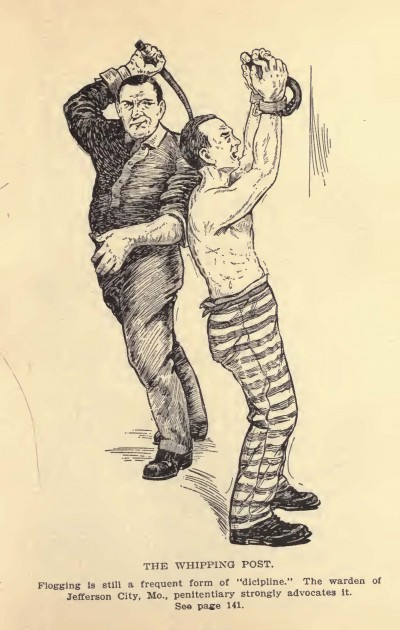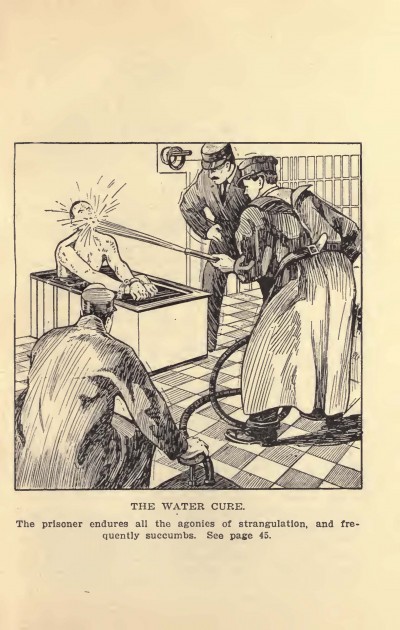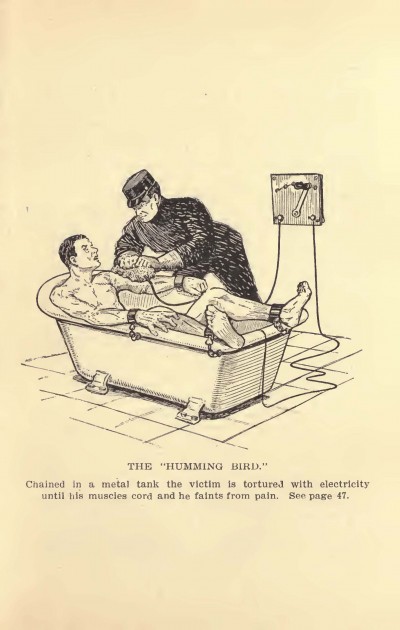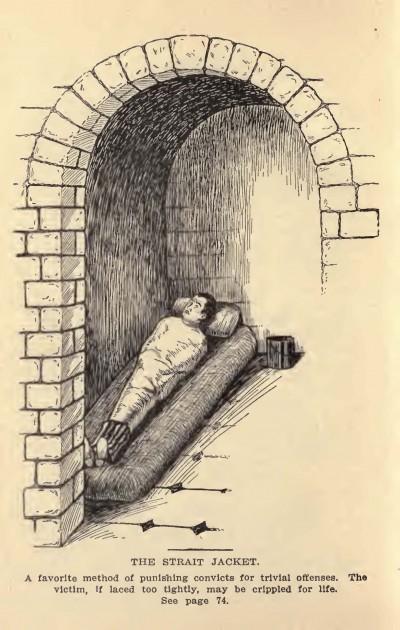Torture & Corporal Punishment in Early 20th Century American Penitentiaries…
There has been a lot of conversation over the past few weeks about Peter Moskos’s new book “In Defense of Flogging.” Basically, Moskos provokes the reader to consider whether flogging is any more inhumane than the current barbaric conditions in which we incarcerate people in the U.S. (especially those who are locked up for non-violent crimes). Moskos suggests that it might in fact be more humane to offer people convicted of crimes a choice of receiving lashes or spending time in prison. You should read the book yourself to learn more about Moskos’s thesis. I have been reading the book this week and am not done with it yet. It gives one a lot of food for thought, that’s for sure.
Reading “In Defense of Flogging” has me thinking about torture and corporal punishment in U.S. prisons over their history. I found a very interesting book online titled “Crime and Criminals” that was published by the Prison Reform League in 1910. I have only read a couple of chapters in that book so far. However, the book provides a comprehensive review of the state of American prisons in the early 20th century. This includes a lot of documentation as well as first hand accounts of torture and corporal punishment.
From Crime and Criminals (1910):
“[I]n the Missouri state penitentiary at Jefferson City the whipping post is resorted to constantly for the disciplining of refractory prisoners and the warden vehemently defends its use. In Hampton’s Magazine, for October, 1909, Charles Edward Russell quotes him as follows:
“In my opinion, it is absolutely necessary. You cannot manage 2000 men of the character of our convicts without corporal punishment. Some men cannot be governed by kindness and recognize only the power of a blow; if we used milk-and-water methods we should have a mutiny every week. I do not know of any punishment more effectual than the whipping post. If you have a bad man you must conquer him, and if society objects to the means employed, society should bear in mind the character of the convict.”
“Mr. Russell describes the floggings, and adds reflections that according to our view, aptly summarize the general situation. He says: ‘At the whipping post in this prison the victim is fastened to a wooden pillar, his hands and feet are manacled and the lash is applied to his bare back. The prison officers say that the number of lashes does not exceed fifteen and that the whip is used only when solitary confinement fails to subdue the convict. It sounds to the last degree barbarous and horrible, but I do not know that it is worse than the sanded paddle of Columbus, and probably it is not so painful or dangerous as the water cure.'”
Below is an illustration of the water cure which is described as follows:
“Having been stripped the delinquent is manacled in the great bath tub. At the height of his neck in the sides of the tub are grooves and in these play great wooden clamps, carved to fit the human body. These are screwed together so as to grip in a vise the man’s chest and arms. In front of him is a faucet and a bit of hose, throwing a smart stream of water. First it is necessary to get the man’s mouth open by making him cry out (which is usually done by frightening him), whereupon the water streams down his throat and strangles him. By those who have suffered this treatment the sensations are said to be indescribably horrible. In spite of his reason the victim feels that with the most excruciating pains he is being tortured to death. I understand that in nine cases in ten the man was carried away insensible and sometimes spent days in the hospital. If he died, I don’t know how the facts would be known. ‘Tis but a man gone — and he is a convict.”
In seeing the image below, I think of the waterboarding that the Bush administration administered to detainees at Guantanamo and in CIA secret prisons. These techniques seem to be with us still…
Other forms of torture also included something called the “Humming-bird” which was documented as having been used in Ohio and Illinois penitentiaries.
“Having been stripped the delinquent was fastened on his back in a shallow metal tank filled with water and connected with one electrode from a dynamo; the other electrode was a wet sponge. Gloved in rubber the operator took the wet sponge and passed it slowly up and down the prisoner’s bare limbs. As it went his muscles corded into knots and he shrieked aloud until he fainted.”
Below are a couple of other visual illustrations of torture and corporal punishment in early 20th century prisons.
Bullrings – “The prisoner is strung up by the wrists in a dark cell and thus left hanging, like a carcass of beef.”
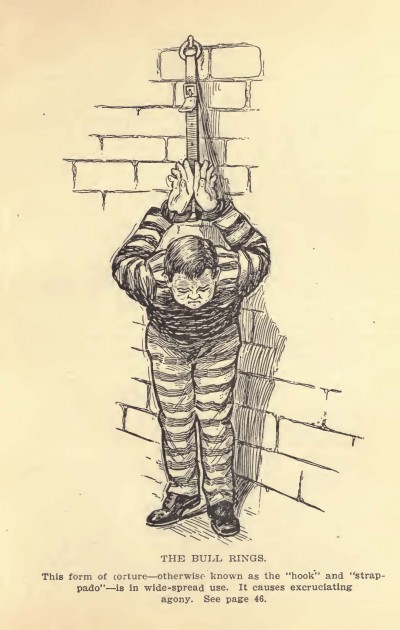
You might wonder what the value of knowing about these techniques is. First, it is important to understand that some of these techniques are still with us today (i.e. waterboarding). It seems important to have a historical context for current torture techniques used against prisoners. Practices do not emerge from nowhere. Second, I think that having a better understanding of prison history allows us to unfurl our imaginations and to consider prison abolition as a viable option. After all, prisons have not always existed and they have not always existed in their current incarnations. It is possible to make changes. It is possible to end incarceration.
